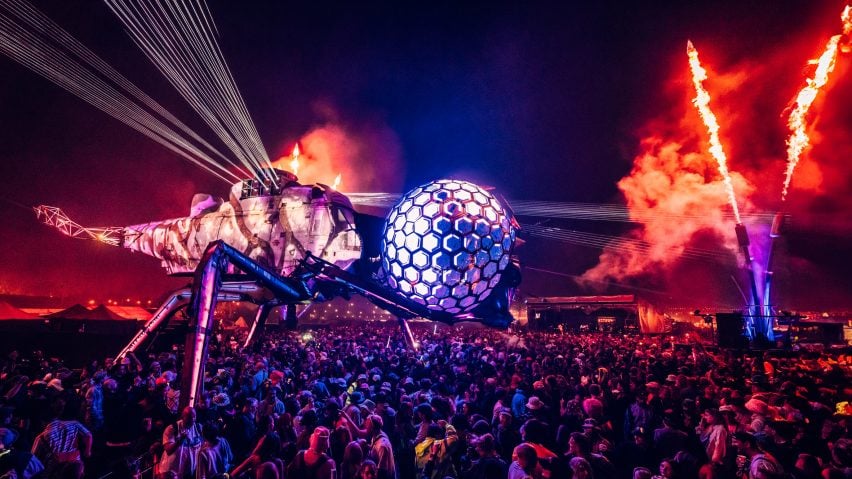
Five Glastonbury stages made from ex-military helicopters and other reused materials
This year's Glastonbury festival debuted stages constructed using reclaimed materials, from storm-felled trees and helicopters to pieces of Heathrow's defunct Terminal 1. Here are five of the most interesting.
Budget constraints and tight deadlines have long meant that festivals reach for cheap plastics like polystyrene to decorate their stages – materials that are often difficult to recycle and live on in landfills for hundreds of years after fulfilling their purpose.
However, as the industry grapples with its impact on the planet, set designers are increasingly reaching for reused and reclaimed materials, which offer similar cost savings while reducing waste.
Glastonbury itself has banned the sale of all single-use plastics and has been powered entirely without fossil fuels since 2023.
"It fosters an environment where it's not just encouraging festivalgoers to leave no trace but stages and installations, too," Pip Rush and Bert Cole, founders of Glastonbury's Arcadia area, told Dezeen.
"We've definitely seen progress. Apart from anything, it's just so exciting to know every single element has its own backstory to tell."
Read on for five standout examples of new stages using old materials from this year's festival.
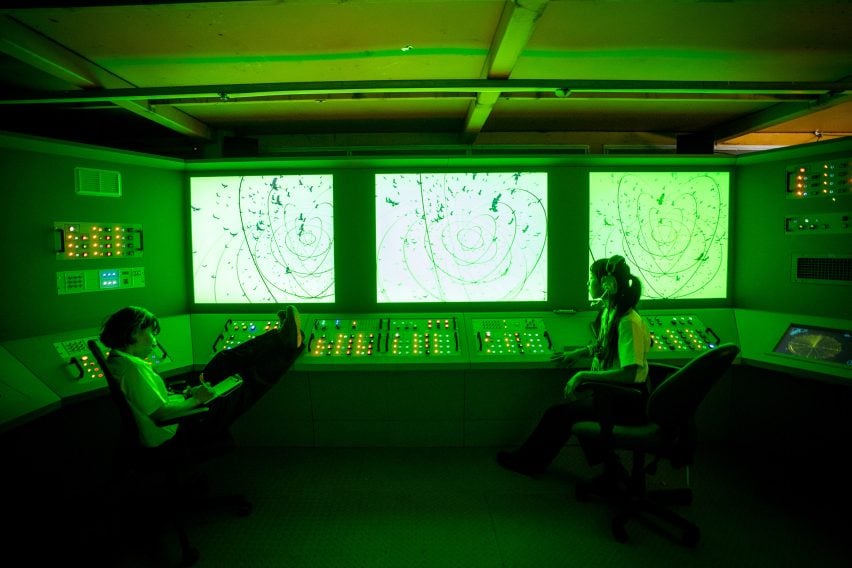
Terminal 1 by Paula Clark Art Productions
Parts salvaged from Heathrow's unused Terminal 1 were used to form Glastonbury's newest area, where a roster of international artists have reimagined the airport experience to comment on pressing environmental and political issues from biodiversity loss to asylum policy.
Among the venues are a nightclub using the sound systems of London's Notting Hill carnival, an air traffic control tower reimagined to marshal migratory birds and a Rwandan duty-free store, providing tongue-in-cheek commentary on the UK government's plan to deport asylum seekers to Rwanda.
To see the contributions by artists including Turner Prize-winner Mark Wallinger, Rwandan photographer Jacques Nkinzingabo and Albanian artist Adrian Paci, festivalgoers had to answer a question from the official UK citizenship test.
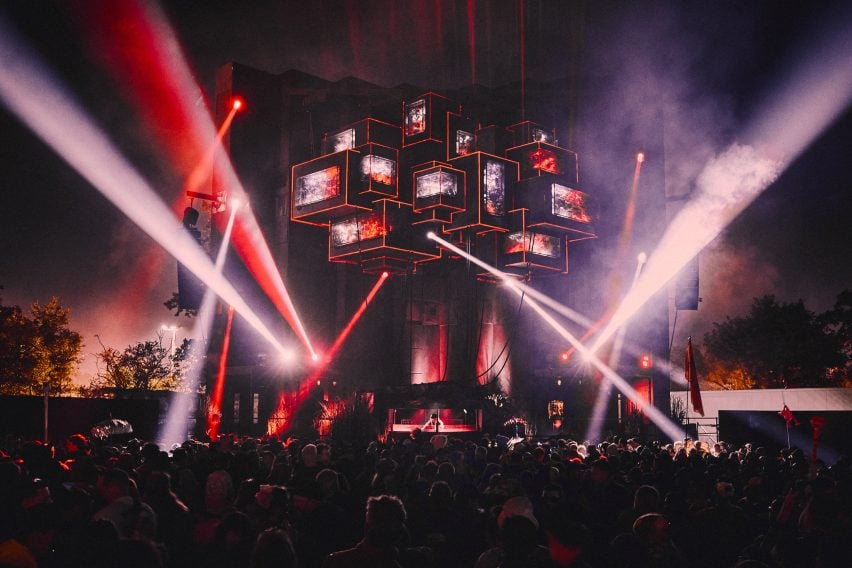
Genosys by Block9
After half a decade of hibernation due to the pandemic and post-Covid budget restraints, Block9's towering 21-metre-tall Genosys stage has returned to the festival for the first time this year.
The structure, reminiscent of a post-apocalyptic Nakagin Capsule Tower, was meticulously rebuilt and refurbished over the course of a year in one of Glastonbury's own recycling barns, its rotten framework replaced, facade repainted and any dead steel cut away and recycled.
Meanwhile, the salvaged 1970s coach that acted as its placeholder – first brought in for the live-streamed version of the festival in 2021 – now serves as a permanent home for Block9's charitable partners, which receive all the admission fees of the area's queer nightclub NYC Downlow.
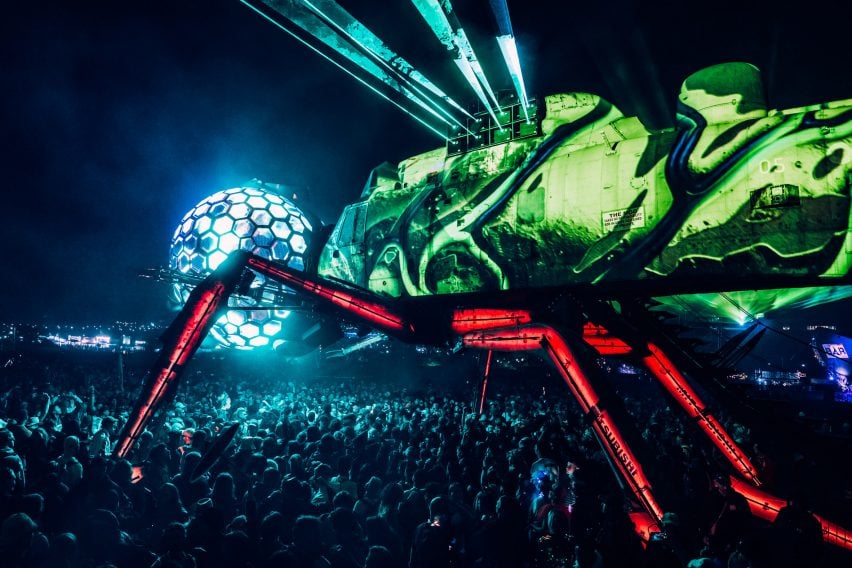
The Dragonfly by Pip Rush and Bert Cole
Late-night arena Arcadia has retired its giant fire-breathing spider in favour of an animatronic dragonfly made from a retired Royal Navy helicopter, with digger arms for legs and lasers for wings.
The swivelling head, which holds the DJ booth, is clad in hexagonal LED panels that change colours to evoke iridescent insect eyes.
"Our goal is to reuse as much as is physically possible to create our installations, and we scour the world for parts, from jet engines to helicopters and harbour cranes," said the Arcadia founders.
"The minute we found the decommissioned Sea King we knew we had something special on our hands. Working with repurposed materials means the design process is always led by the machines we find, and the form of the helicopter instantly fit as the body of the Dragonfly."
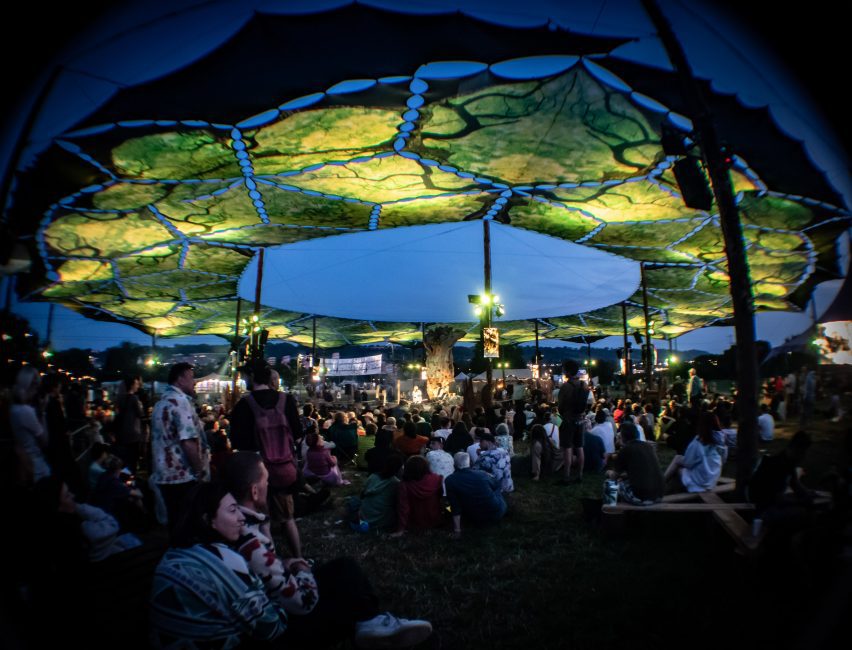
The Tree Stage by Lilith Piper
A knarled 300-year-old oak tree that fell during a storm in nearby Bruton was repurposed to act as the centrepiece of the open-air Tree Stage, set in the festival's only wooded area known as Woodsies.
After being picked up by a local sawmill, the massive trunk was cut into threes so it could be transported to the site and reassembled upside down with its roots in the air to form a kind of reverse canopy.
Around the tree, 20 speakers were arranged into two concentric circles, creating a "quadraphonic audio" experience that immersed festivalgoers in the stage's lineup of ambient and experimental music.
"Usually, a system is stereo and you stand in front of a pair of speakers," said sound designer Jamie Harley. "With quadrophonic, the music surrounds you."
"You can move around, and get a different sensation wherever you are."
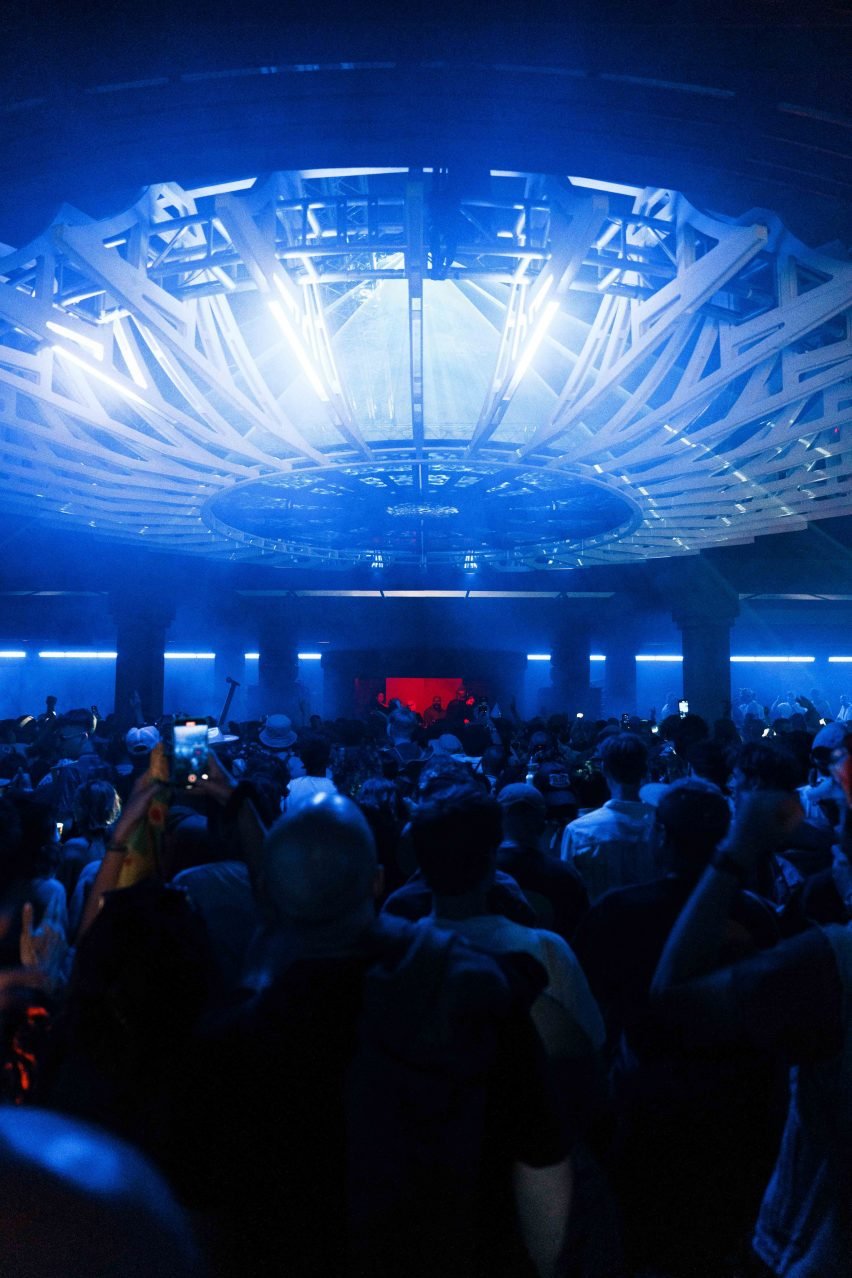
Assembly by Hidden Corners and Bristol Limbic Cinema
Glastonbury's Silver Hayes area gained its first indoor venue this year with Assembly, where a dramatic dropped ceiling is animated by volumetric projections from design studio Limbic Cinema to create an intimate, sweaty atmosphere.
Creative duo Hidden Corners constructed Assembly's entire base structure, including walls and core ceilings, using one of its former stage designs from Bristol festival Love Saves the Day.
The Wow stage, which formerly occupied the same spot, has been dismantled and its two-by-two timber battens repurposed elsewhere across the field.
"We recycle all of our sets, which actually makes our lives really hard," said Silver Hayes creative director Rebecca Fitzgerald. "We have loads of containers of loads of sets. It's like we're hoarders with the biggest loft in the world, full of old timber, old flats, old everything."
"I think Festivals 100 per cent prioritize that way more than a lot of other creative industries. It's something that's really important to us. We don't use ever use glitter, we don't use simple-use plastics."